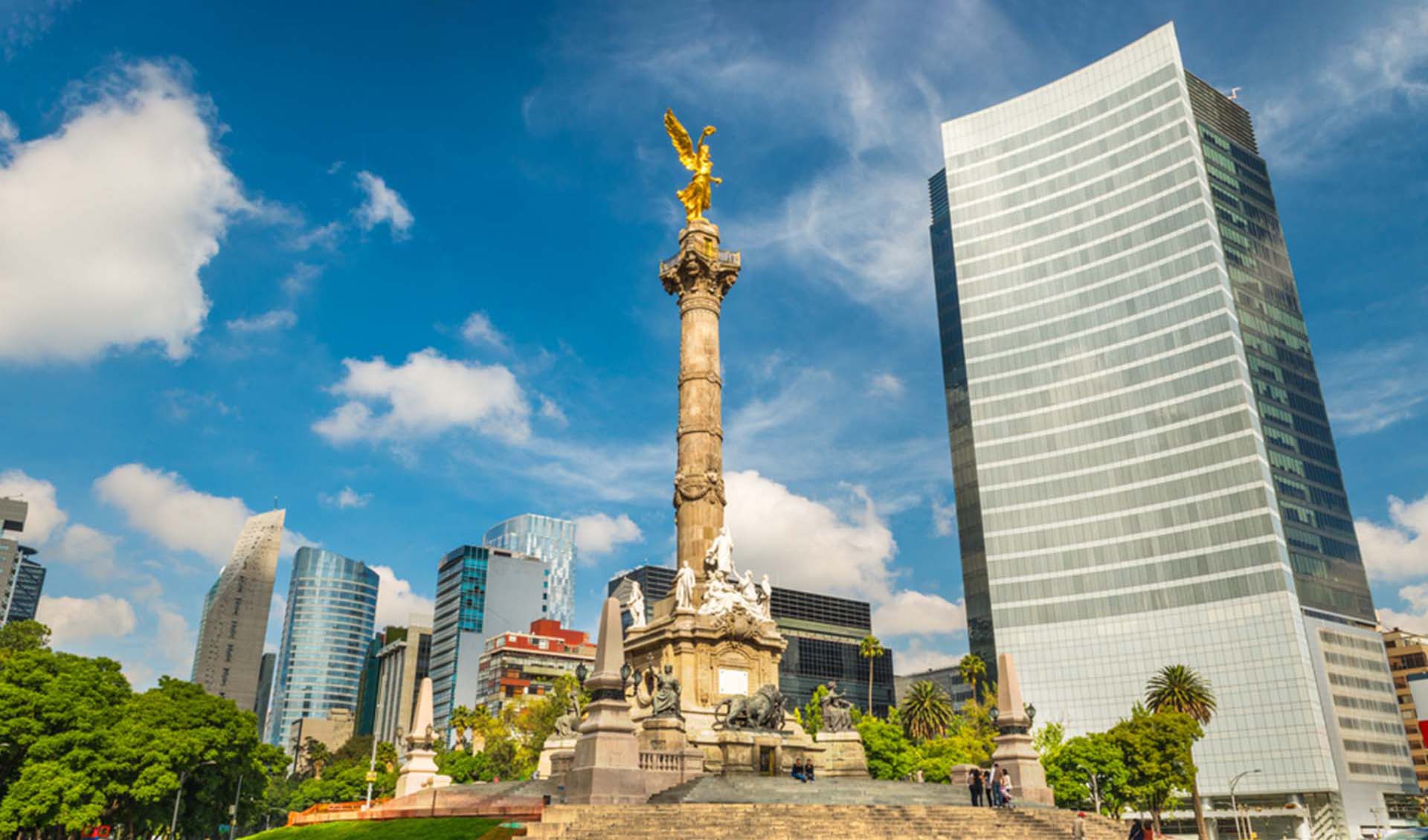
WE SHOW YOU THE CITY®

Select Your Favourite Trip and Travel with QUATE Tu Amigo.
COYOACAN
The leafy Jardín Centenario park sits at the center of bohemian Coyoacán, known for its cobblestone streets and colonial architecture. The bright-blue Museo de Frida Kahlo, showcasing her life and work, is here, as are the well-preserved former home of Leon Trotsky, art galleries, and colorful artisan markets. Upscale sidewalk cafes sit side by side with laid-back ice cream parlors along the tree-lined streets.
COYOACAN
The leafy Jardín Centenario park sits at the center of bohemian Coyoacán, known for its cobblestone streets and colonial architecture. The bright-blue Museo de Frida Kahlo, showcasing her life and work, is here, as are the well-preserved former home of Leon Trotsky, art galleries, and colorful artisan markets. Upscale sidewalk cafes sit side by side with laid-back ice cream parlors along the tree-lined streets.
SANTA FE
Characterized by its corporate skyscrapers, is the most modern district in Mexico City. The streets are bustling during business hours and quieter at night, and are home to international restaurants offering everything from fast food to upscale. The area has several university campuses and international chain hotels, as well as the Centro Santa Fe, an extensive shopping center with 500 stores that is among the largest in Latin America.
CONDESA
Considered fashionable, especially among young businesspeople, students, pet lovers and others.There are some wide avenues and lined with trees. It is mostly filled with restaurants, cafés, boutiques and art galleries.Some of these shops include the Rosario Castellanos bookstore, which includes a cáfe, an auditorium theatre and a children’s room,the Bar Malverde, with its lucha libre theme, and the Café La Gloria, which has been around for over a decade. Most of the bars and cafes are concentrated along Amsterdam and Michoacán avenues.
CONDESA
Considered fashionable, especially among young businesspeople, students, pet lovers and others.There are some wide avenues and lined with trees. It is mostly filled with restaurants, cafés, boutiques and art galleries.Some of these shops include the Rosario Castellanos bookstore, which includes a cáfe, an auditorium theatre and a children’s room,the Bar Malverde, with its lucha libre theme, and the Café La Gloria, which has been around for over a decade. Most of the bars and cafes are concentrated along Amsterdam and Michoacán avenues.
DOWNTOWN
Home to historic landmarks dating from as far back as the Aztec era, Centro Historico is the city’s beating heart. Centered around the massive Zócalo plaza, the area draws tourists to museums and iconic buildings like the art nouveau Palacio de Bellas Artes and the Metropolitan Cathedral. Street vendors and basic taquerías exist in harmony with high-end restaurants along the bustling, pedestrian-only Calle Madero.
MONUMENTO A LA REVOLUCION
The Monument to the Revolution (mexican arch of triumph) is a landmark and monument commemorating the Mexican Revolution. It is located in Plaza de la República, near to the heart of the major thoroughfares Paseo de la Reforma and Avenida de los Insurgentes in downtown Mexico City.
MONUMENTO A LA REVOLUCION
The Monument to the Revolution (mexican arch of triumph) is a landmark and monument commemorating the Mexican Revolution. It is located in Plaza de la República, near to the heart of the major thoroughfares Paseo de la Reforma and Avenida de los Insurgentes in downtown Mexico City.
POLANCO
Famous brands from around the world and luxury international restaurants line Avenida Presidente Masaryk, the main shopping avenue in the center of this prestigious district. The tree-lined streets are home to neo-colonial Spanish mansions and luxury apartments. To the north, Nuevo Polanco features modern architecture, including the futuristic Soumaya Museum, with its large Rodin collection and one of the largest aquariums in Latin America.
XOCHIMILCO
The famous Xochimilco canals, the last remnants of the extensive transportation system created by the Aztecs, are located in southern Mexico City, alongside a struggling working-class neighborhood. Colorful gondolas take visitors on rides alongside the boats of food vendors, artisans, and mariachis. The atmosphere is festive, especially on the weekends. Tourists can also visit the chilling Island of the Dolls, supposedly haunted.
XOCHIMILCO
The famous Xochimilco canals, the last remnants of the extensive transportation system created by the Aztecs, are located in southern Mexico City, alongside a struggling working-class neighborhood. Colorful gondolas take visitors on rides alongside the boats of food vendors, artisans, and mariachis. The atmosphere is festive, especially on the weekends. Tourists can also visit the chilling Island of the Dolls, supposedly haunted.
CHAPULTEPEC
Is one of the largest city parks in the Western Hemisphere, measuring in total just over 686 hectares (1,695 acres). Centered on a rock formation called Chapultepec Hill, one of the park’s main functions is as an ecological space in Greater Mexico City. It is considered the first and most important of Mexico City’s “lungs”, with trees that replenish oxygen to the Valley of Mexico. The park area has been inhabited and considered a landmark since the Pre-Columbian era, when it became a retreat for Aztec rulers. In the colonial period, Chapultepec Castle was built here, eventually becoming the official residence of Mexican heads of state. It would remain so until 1940, when it was moved to another part of the park called Los Pinos. Contains most of the park’s attractions, including the castle, the Chapultepec Zoo, the Museum of Anthropology, and the Rufino Tamayo Museum, among others.


